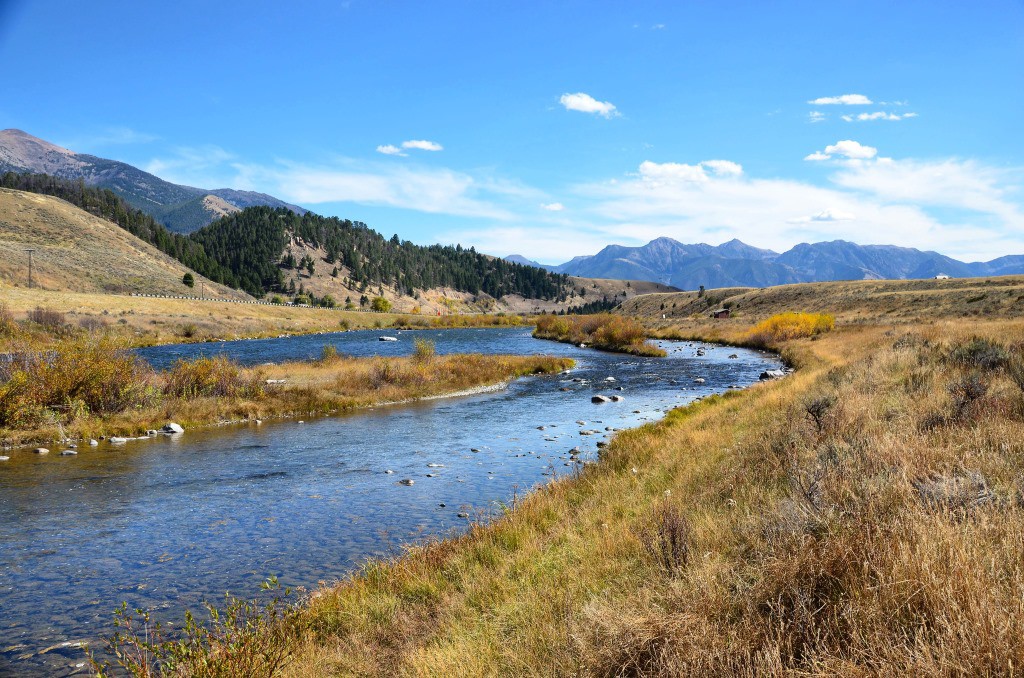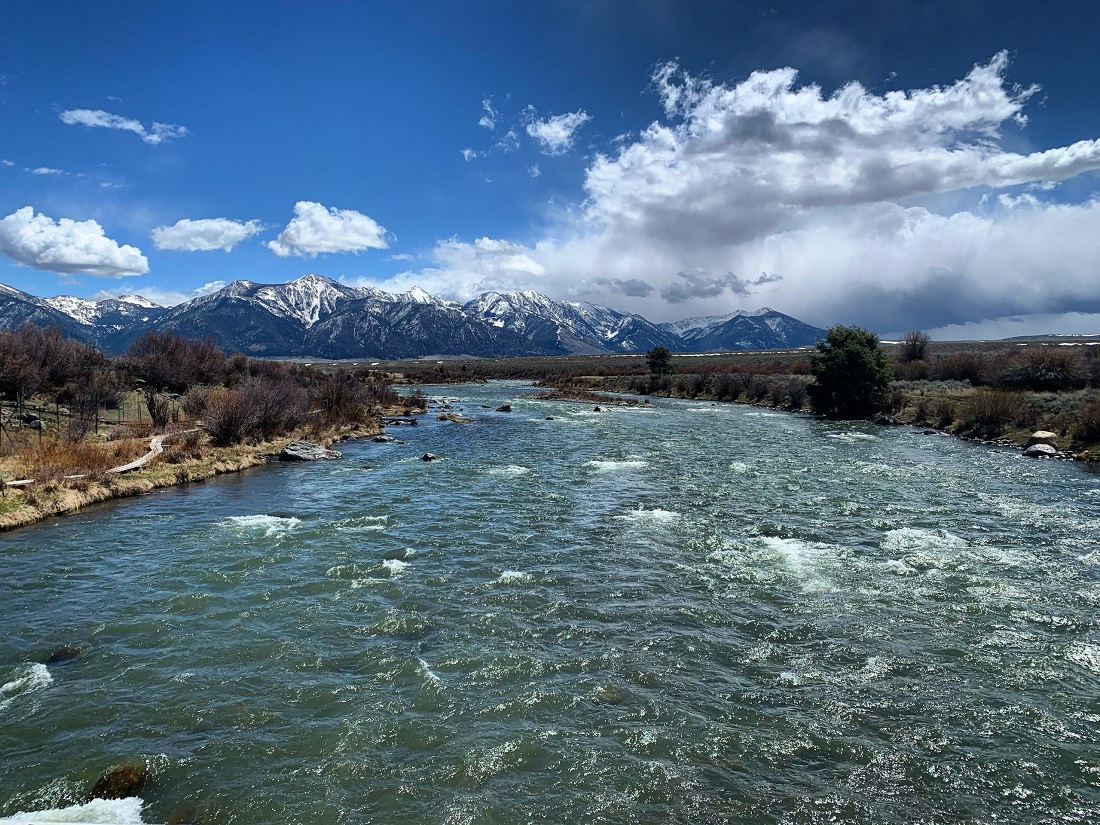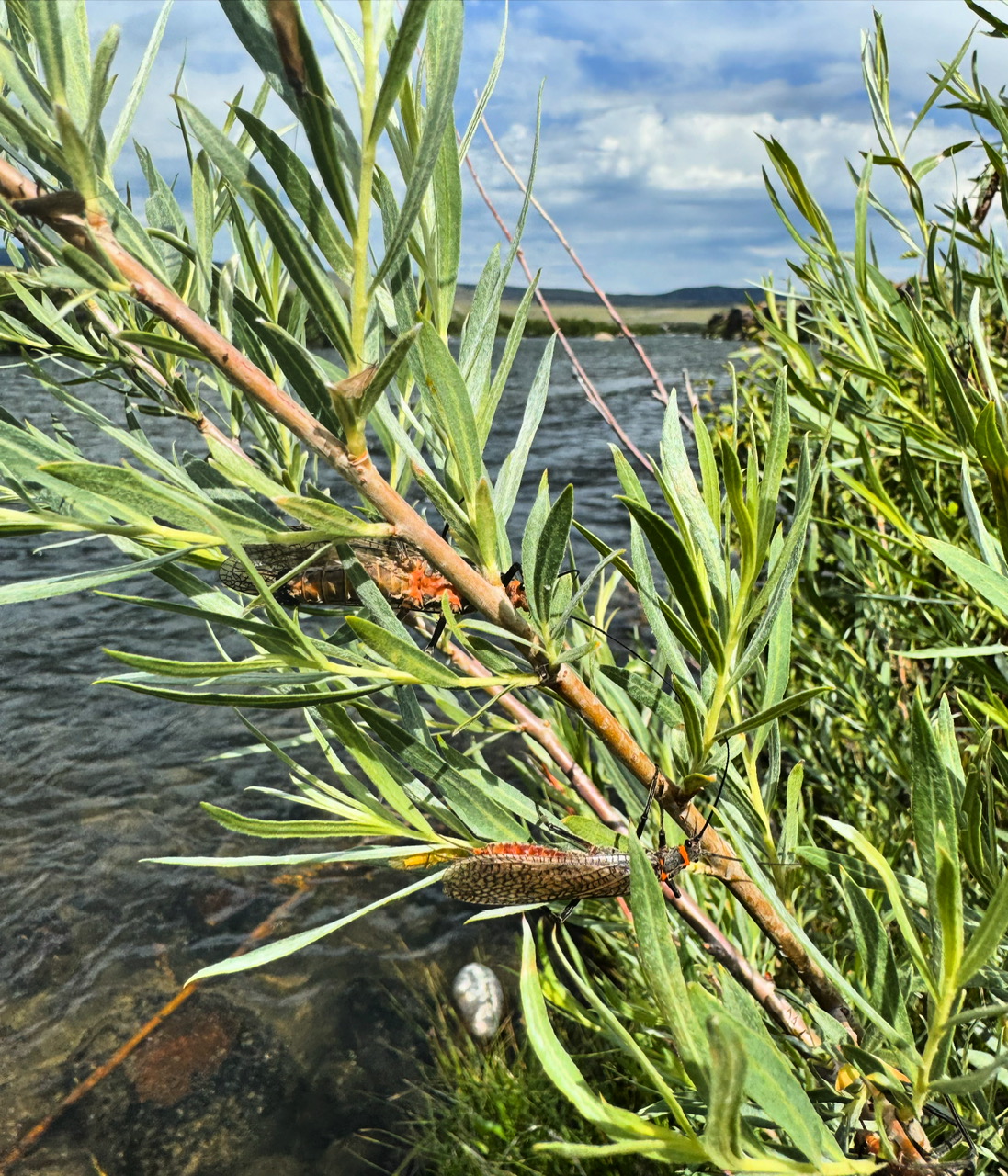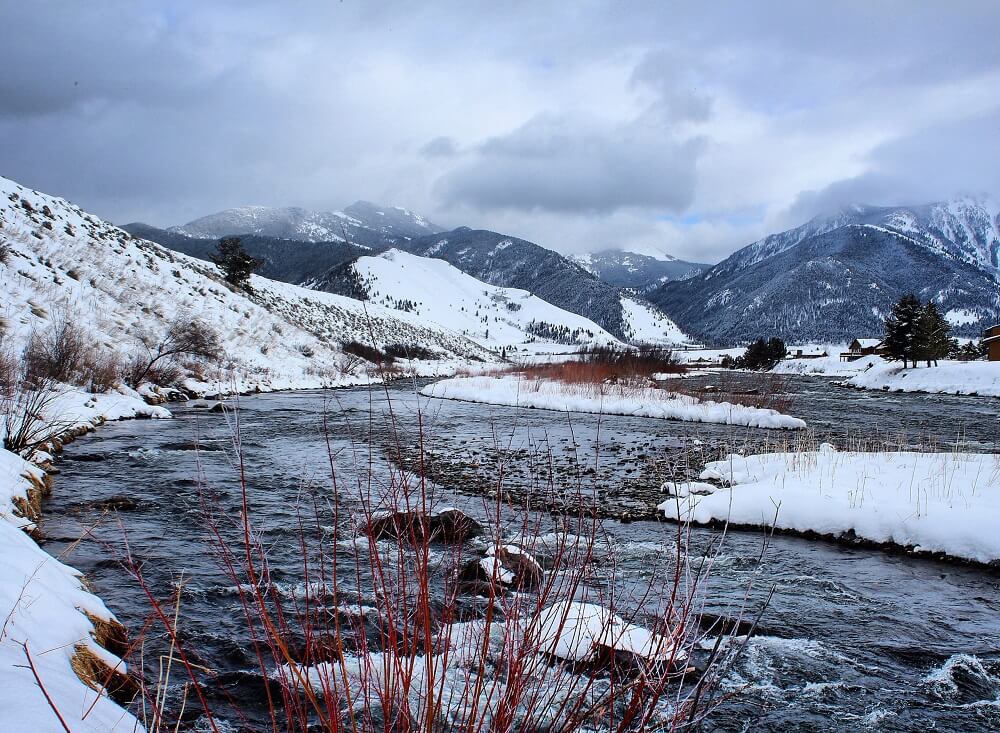
The Madison in Montana is one of the most unique and scenic blue-ribbon trout streams in the country and one that we are proud to call our home. Its headwaters are formed at the confluence of the Firehole and Gibbon Rivers in Yellowstone National Park after which it flows roughly 15 miles before emptying in Hebgen Lake near the town of West Yellowstone. On the west side of the lake, Hebgen Dam releases water to a short 1.5-mile stretch commonly referred to as between the lakes, that serves up some fantastic opportunities to the wade fishermen before flowing into Quake Lake. Quake Lake was formed by an Earthquake measuring 7.3 on the Richter scale in 1959 which sent an estimated 80 tons of mountainside into the river. A month later the U.S. Army Core of Engineers constructed a natural spillway to ensure erosion and potential failure of the natural dam would be minimized. From the outlet of Quake Lake to the town of Ennis, the river drops nearly 1,500 feet in elevation and is commonly referred to as the fifty-mile riffle. This section is world-renowned for its prolific hatches of caddis, mayflies, and stoneflies and offers up some incredible streamer action for those looking to hook into the one. You will find a good mix of Brown and Rainbow Trout that inhabit these waters, as well as the native Mountain Whitefish. There are still a few Yellowstone Cutthroats caught each year, but it is certainly not a common encounter.
Seasons on the Upper Madison
The Upper Madison is open all year from the boundary waters of Yellowstone National Park to Ennis Lake.
Spring

March and April can be incredible months for fishing on the Madison River in Montana. Early March is usually more of a nymphing game than anything else, but you can still have some good midge hatches coming off when the clouds move in below Varney Bridge. From Mid-March through the end of the month our rainbows are starting to color up and enter into pre-spawn mode. If water temperatures are on the warmer side, which is not always the case this time of year, you can actually have some great streamer fishing. However, it is usually still a bit on the chilly side and nymphs such as Pat’s rubber legs, BWO nymphs, san juan worms, egg patterns, and midge larva are generally your best bet at catching fish.
April means that spring is in the air throughout the Greater Yellowstone region. Water temperatures start to warm up, and we begin to see the first signs of Blue Wing Olives riding the surface film. Streamer fishing really starts to pick up between the lakes and in the float section below McAtee Bridge, and some of the biggest fish in the river start to wake up and put on the feed bag. It is not uncommon to see a few Skwalla Stoneflies between Varney Bridge and the Ennis take out this time of year, but the real story can be the Mother’s Day Caddis hatch (Brachycentrus occidentalis) that occurs anywhere from late April through the first week in May. These grayish-tan insects can emerge in such numbers that they will literally cover your entire body, and trout will gorge themselves every evening on the first mega-hatch of the year. While the Lower Madison below Ennis Lake will have more bugs (and more anglers), the Upper Madison below Varney Bridge will also see good numbers of Mother’s Day Caddis when you hit it right.
In May you can expect to see good numbers of Blue Wing Olives, Midges, and even a few Skwalla Stoneflies on the surface, but for the most part nymph fishing is the way to go. San Juan Worms, stoneflies, baetis nymphs, and egg patterns will be your top producers, but don’t forget to bring a good selection of streamers with you as May through late June can offer up some of the hottest action of the year. While wade fishing during this time frame, be aware that it is usually the peak of the spawn for our resident rainbows and to avoid walking on or behind spawning redds at all costs.
Historically speaking, runoff on the Madison typically occurs from the first week through the third week in June, but it can last much longer than that depending on the current year’s snow pack in the mountains. As water levels rise and visibility decreases, many anglers are put off by the brown, raging currents and decide to head elsewhere. While there are certain parts of the Madison that don’t usually fish well under these conditions, the upper 12 miles can offer up some incredible nymph fishing in the slower inside bends and channels. We do not recommend float fishing the river during this time frame, as it far more productive to pick apart likely holding water with multiple drifts during periods of low visibility.
Summer

As water levels begin to drop and visibility starts to improve around the third week in June you will start to see more surface activity. Midges, baetis, giant gray sedges, tan and olive caddis, and PMDs begin to make their presence known, and of course we are all waiting for the first signs of salmon flies and golden stones down river.
By July 1st the river is exploding with insect activity, and our trout are gorging themselves as a result. It has been reported that the fish in the Madison will put on one third of their annual weight gain in this three-week period of the salmon fly hatch. The salmon flies are in full swing at this point, but that is not the only story on the river. There are also golden and olive stones, yellow sallies, three types of Caddis, Eperous Mayflies, PMDs, Flavs, and crane flies buzzing around. Simply put, there is no time of year when the angler or the fish has more to choose from on the Madison, and it soon becomes apparent how our trout are able to gain so much weight in so little time.
As August rolls around the fishing is predominated by terrestrials and attractors. Flightless nocturnal stoneflies are a readily available food source for trout, and the early riser as well as the night owl can have some incredible dry fly fishing twitching big foam patterns along the banks. Hoppers definitely rule the late summer menu, but there are still many other insects available for trout including tricos, midges, mottled black caddis, spruce moths, crane flies, and of course the ant. It should be noted that ants are the most overlooked food source on the Madison, and some of our best dry fly fishing in August and early September have come as a result of fishing ant patterns.
September is when things start to slow down in the West– The kids are going back to school, archery and upland bird season begins, and many of the anglers are gone also. The insect activity is much the same as August with terrestrials, attractor patterns, and a few caddis being the most productive options. As the water temps start to drop slightly, our big browns will start getting into pre-spawn mode and become a lot more aggressive as a result. This is a great time to start thinking about streamers, but nymph fishing with small midges, BWO nymphs, and attractors can be outstanding as well.
Fall

Late September through October is without a doubt our favorite time of the year on the Madison, Montana. The colors are changing, herds of elk, bison, and deer are move, and the streamer fishing is really starting to get hot. BWO’s and Midges dominate the river for dry fly activity, but the real story is happening just below the surface. Leeches, sculpin, and big stoneflies nymphs are always sure bets this time of year, as our resident browns are getting ready to spawn and are actively seeking bigger meals in order to put on a little extra weight. Angling pressure is extremely low this time of year and the river is possibly at its best.
November means hunting season in Montana and the rivers are all but empty… This is a truly a month of extremes in terms of weather and fishing alike. You can have brutally cold days with highs in the single digits or it can be a balmy 50 degrees and sunny. You just never know what Mother Nature has in store, so it’s always best to bring plenty of cold weather gear and plan for the worst rather than the other way around. From a fishing perspective you are either going to be throwing dries and nymphs running from size 18 to size 22 or ripping 3-6 inch streamer patterns along the bank. November is BWO and midge time and the fish are actively seeking them out during the late morning and early afternoon hours. On the other hand this is the time of year when the huge browns are just as likely to attack a big steamer. The one constant is that to see more than a few anglers a day is very rare.
Winter

December through February can be extremely cold months in the Madison Valley, but for the angler willing to brave the elements the midge fishing can be the best of the year. Winter fishing is more about staying warm than anything else, and a good drift is always more important than what pattern is at the end of your line. Check out our write-up on winter midge fishing on the Madison here.
